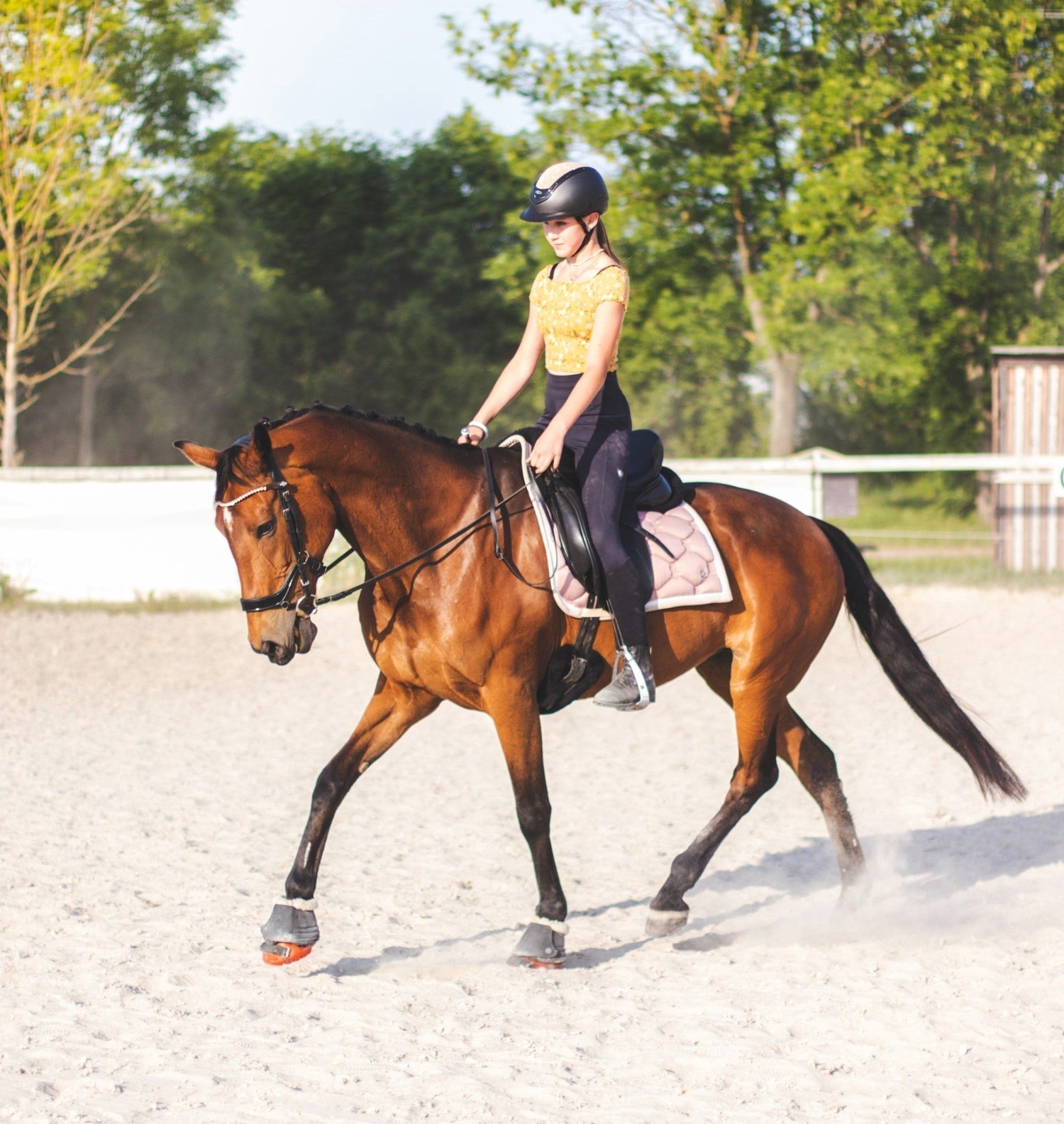Insights from Anna at GoBarefootHorse.com
Low-grade laminitis is one of the most under-recognized threats to long-term hoof health. In this article, we explore what it is, how to detect it early, and how to help your horse thrive—naturally and barefoot.
What Is Low-Grade Laminitis?
Low-grade laminitis is a chronic, low-intensity inflammation of the sensitive laminae or solar corium—or both—within the hoof capsule. Unlike acute laminitis, it rarely causes obvious lameness. Instead, it may present as mild sole sensitivity even when sole thickness appears adequate (over 11 mm). Think of it as a subtle warning light blinking on your horse’s health dashboard.
Rather than a sudden breakdown, the hoof undergoes gradual structural changes—weakening of the white line, hoof distortion, flaring—and sets the stage for more serious problems, including full-blown laminitis, if left unaddressed.
What Causes It?
Low-grade laminitis often stems from a combination of long-standing internal and external stressors.
Metabolic Causes:
- Insulin resistance or Equine Metabolic Syndrome (EMS), typically due to overfeeding, lack of exercise, or dietary overload from lush grass, molasses-laced, or starchy feeds
- Unbalanced mineral intake
Mechanical & Environmental Factors:
- Overgrown hooves and infrequent trimming: Prolonged peripheral loading (when the horse bears weight mainly on the hoof wall) weakens the laminar attachment. After finally receiving a proper trim, these hooves may show soreness—not because of a poor trim, but because of long-term neglect.
- Improperly balanced trims: Inadequate trimming can lead to toe overload. This may happen in two key ways:
- Heels left too high, shifting weight forward onto the toes
- Severely deformed or unbalanced heels (e.g., underrun, contracted, prolapsed, or those with negative palmar/plantar angles) causing toe-first landings due to discomfort during heel-first movement
- Lack of movement or turnout: Reduces hoof circulation and may impair blood flow to the laminae and solar corium.
Digestive Health:
- Gut flora imbalance, pH disturbances, or gastric issues: Create systemic inflammation and impair nutrient absorption
- Inflammatory gut conditions: Disrupt metabolic regulation
It’s important to note that horses vary in their metabolic and physical resilience. Just because ten horses appear to cope well with limited turnout and grain-based diets doesn’t mean the eleventh will. Individual tolerance levels differ greatly.
Early Warning Signs
Early detection is crucial. You don’t need to see all these signs to justify further investigation - the presence of just a few can point to early-stage laminitis.
In barefoot horses, these signs tend to appear sooner. Their hooves, free of metal interference, maintain stronger blood flow and nerve feedback—allowing early discomfort to be noticed. Shod horses, with compromised circulation and sensation, may silently develop the same issues unnoticed.
Look for subtle changes such as:
- Mild sensitivity on gravel or hard ground
- Soreness after a regular trim (despite the method being unchanged)
- Unexplained soreness mid-trimming cycle
- “Toe-first” landings
- Stiffness after rest
- Reluctance to turn tightly
- Horizontal rings on the hoof wall
- Flaring of the hoof wall or toe despite correct length
- White line separation or disease
- Retracted or flattened soles (suggesting mild coffin bone descent or “low-grade sinking”)
- Frequent abscesses or seedy toe
- Persistent minor hoof wall cracks, layering near the ground surface (especially when all four feet are affected, often with concurrent white line stretch)
Why It Matters in Barefoot Hoof Care
Barefoot hooves act as natural shock absorbers and circulation pumps—but only when they’re healthy. Even slight imbalances can undermine function. Low-grade laminitis distorts the hoof capsule, reduces hoof mechanism efficiency, and increases the risk of acute laminitis.
The good news? Barefoot care makes detection easier and recovery faster—when action is taken early.
Prevention and Support Strategies
1. Feed for Metabolic Balance
- Provide low-NSC hay and avoid sugary pastures
- Eliminate molasses and high-starch feeds
- Balance key minerals like magnesium, zinc, and copper
- Avoid overfeeding—even unlimited hay can be a problem without sufficient movement
2. Encourage Movement
- Use track systems or large paddocks
- Promote herd turnout for natural, social motivation
- Avoid prolonged stabling
3. Trim Regularly
- Trim every 3–5 weeks depending on growth and wear
- Maintain toe length and heel balance
- Watch for white line distortion or sole retraction
4. Support Gut and Liver Health
- Use pre- and probiotic supplements for digestive balance (Google Poseidon Animal Health's Digestive HP in USA, NZ and Australia.)
- Support detox pathways with herbs like milk thistle
- Explore circulation and Metabolic support supplements like Laminaze and LaminAid; or MetaboLize in Australia and New Zealand
5. Monitor and Act Quickly
- Photograph hooves regularly and track changes
- Use hoof testers or thermography when in doubt
- Don’t wait for major symptoms—intervene early
Low-grade laminitis may be quiet, but it’s not harmless
Early recognition and proactive care can stop this condition in its tracks.
At Go Barefoot Horse, we’ve helped many horses recover by listening closely to what their hooves are telling us. If you suspect early signs of low-grade laminitis, don’t wait—act. Recovery is possible, rewarding, and much easier when addressed on time.
Disclaimer: This article is not a substitute for veterinary care. Always consult your veterinarian.





